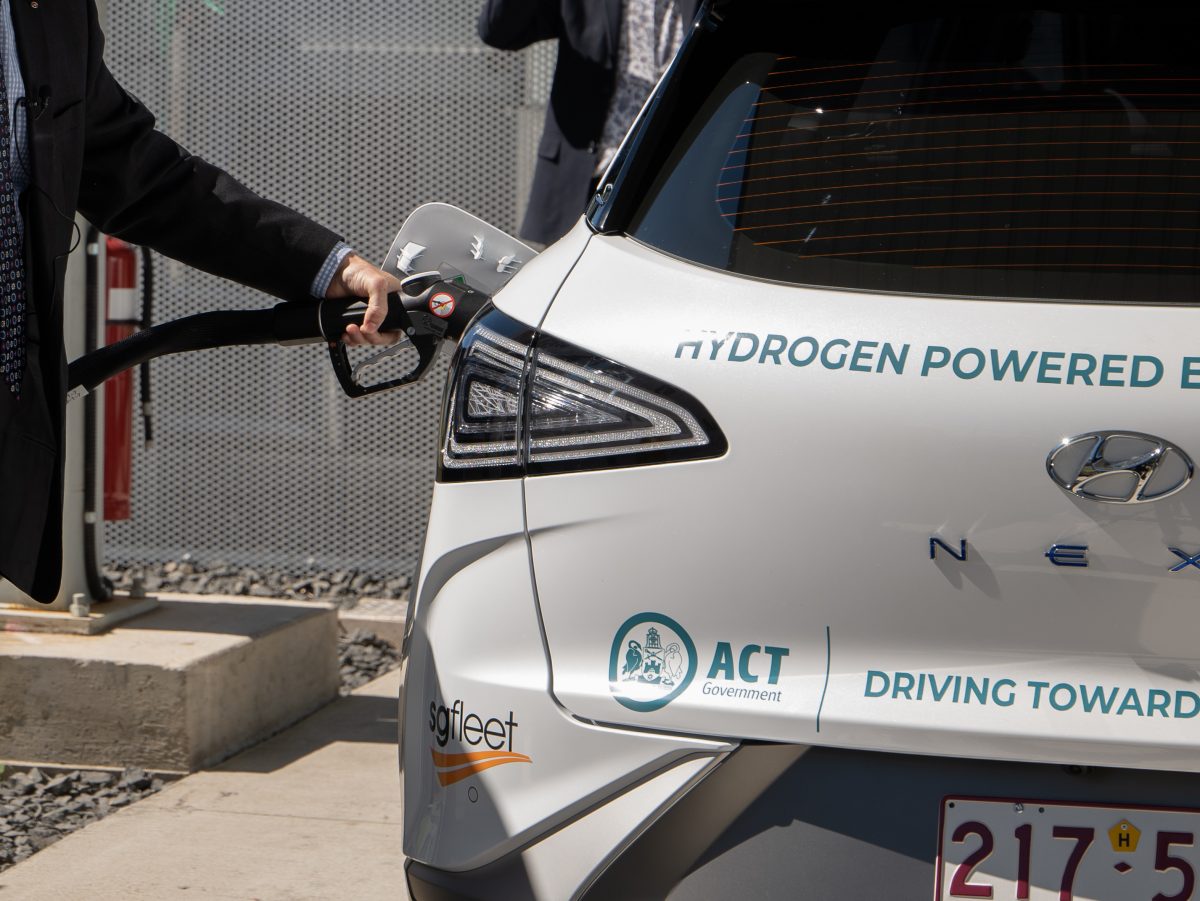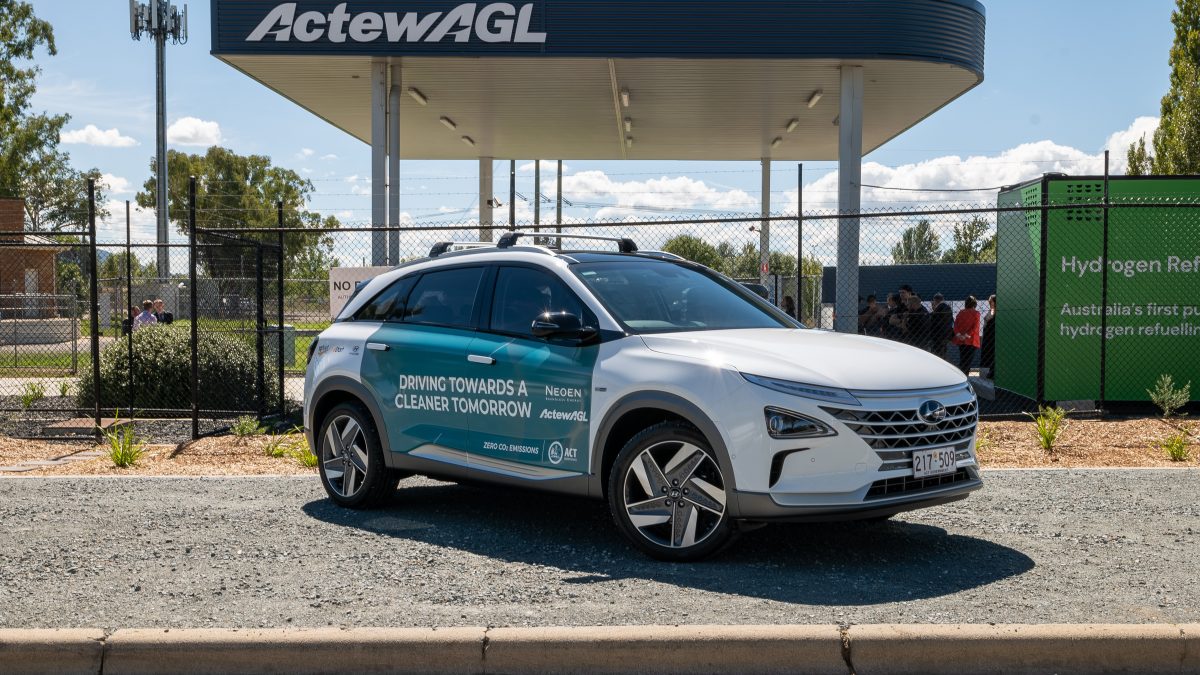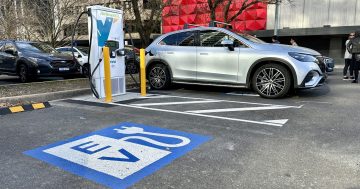
Hydrogen and biofuels are up-and-coming power sources for vehicles across the size spectrum. Photo: Supplied.
The ACT Government has set the end of the fossil fuel age at 2035 – from that date, you won’t be able to register new fossil-fuel-powered cars in the ACT. New cars will have to be zero-emission vehicles, with an emphasis on battery-electric vehicles (BEVs).
But are there other ways? The short answer is yes.
The ACT was the first to heavily invest in hydrogen, adding 20 Hyundai NEXOs to the government fleet in March 2021.
Shortly afterwards, ActewAGL opened Australia’s first hydrogen refuelling station in Fyshwick. In May this year, CIT kicked off a new training program for electric and hydrogen vehicle mechanics to ensure we have the skills down pat.
Over the border, the NSW Government has now partnered with the Victorian Government to bring hydrogen to Australia’s roads, starting with the Hume Highway.
NSW Treasurer and Minister for Energy Matt Kean said applications are now open for $20 million in grant funding to support hydrogen-powered trucking along Australia’s busiest freight corridor.
“This initiative aims to show the potential of renewable hydrogen for heavy vehicles with the goal of transitioning the freight sector to zero emissions energy sources,” Mr Kean said.
The two state governments have each invested $10 million into the ‘Hume Hydrogen Highway’ to fund four refuelling stations along the highway and approximately 25 hydrogen-powered trucks.
Grant applications close on 22 October, with construction to be completed by 2026.
Robert Edwards is chair of the National Hydrogen Training Committee and director of H2 Networks, a Canberra-based hydrogen equipment business. He says hydrogen fuel cells and networks are only about five to 10 years away – “further ahead than many give it credit for”.
“Hydrogen fuel cell technology is proven – it’s been around for a long time,” he says.
Hydrogen-powered vehicles still need a battery because the hydrogen fuel cells can’t create power fast enough on their own. By acting as a temporary storehouse, the battery can discharge more kilowatts at once.
But due to its smaller role, a hydrogen vehicle’s battery can be much smaller and therefore lighter than in a BEV. Not only does this mean less lithium and other rare earth minerals are needed, but also less power is needed to get the vehicle up to speed.
This blend has made hydrogen the ideal clean option for heavy vehicles, such as trucks, buses and trains. And that’s largely where it has stayed – Hyundai and Toyota are the only mainstream brands to experiment with hydrogen cars. But Richard sees potential for more.

The hydrogen-powered Hyundai NEXO outside the Fyshwick refuelling station. Photo: Supplied.
“The average small SUV requires 7 litres of diesel per 100 km travelled, as opposed to one kilogram of hydrogen per 100 km travelled,” he says.
“Therefore, green hydrogen needs to retail for around $13 per kilogram to be on par with diesel … It’s comparable right now.”
Robert welcomes more investments, like that from the NSW Government.
“There’s a lot of money going into green hydrogen production, but it’s no good doing that when nobody is using it. The fact the government is doing something now will start to balance out that equation and make hydrogen more viable.”
But even before we drive home the last nail in the internal-combustion coffin, German car manufacturer Porsche has announced plans to start making biofuels in Tasmania.
The 250-megawatt Tasmania Carbon Neutral eFuel Plant promises to produce more than 100 million litres of carbon-neutral biofuels annually, with the ability to pump out up to 190 tonnes a day once it starts up halfway through 2026.
Biofuel combines CO2 from the atmosphere with hydrogen to create a fuel that will work in existing internal combustion engines, emitting that same amount of CO2 in the process.
Graham Gulson oversees Porsche Centre Canberra and says this will give long-distance drivers and motoring enthusiasts the ability to keep buying new engines beyond 2035.
“The push for electric cars is there because we want to help reduce greenhouse gas emissions – and this does that,” he says.
“Anything that continues to give consumers choice is a great thing.”













